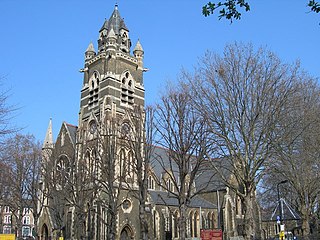
Dalston is an area of East London, in the London Borough of Hackney. It is 4 miles (6.4 km) north-east of Charing Cross. Dalston began as a hamlet on either side of Dalston Lane, and as the area urbanised the term also came to apply to surrounding areas including Kingsland and Shacklewell, all three of which being part of the Ancient Parish of Hackney.

The British Indian Army was the main military of the British Indian Empire before its decommissioning in 1947. It was responsible for the defence of both the British Indian Empire and the princely states, which could also have their own armies. The Indian Army was an important part of the British Empire's forces, both in India and abroad, particularly during the First World War and the Second World War.

The Allies of World War I or Entente Powers were the coalition of countries led by France, Britain, Russia, Italy and Japan against the Central Powers of Germany, Austria-Hungary, the Ottoman Empire, and Bulgaria during the First World War (1914–1918).

Judah Leon Magnes was a prominent Reform rabbi in both the United States and Mandatory Palestine. He is best remembered as a leader in the pacifist movement of the World War I period, his advocacy of a binational Jewish-Arab state in Palestine, and as one of the most widely recognized voices of 20th century American Reform Judaism. Magnes served as the first chancellor of the Hebrew University of Jerusalem (1925), and later as its President (1935–1948).
The Royal New Zealand Army Medical Corps (RNZAMC) is a corps of the New Zealand Army, the land branch of the New Zealand Defence Force (NZDF). The Medical Corps provides for the medical needs of soldiers, such as diagnosing and treating diseases and injuries. Medical personnel are part of almost all Army exercises and operations, and personnel work in conjunction with personnel from the Royal New Zealand Dental Corps and the Royal New Zealand Nursing Corps.

Augusta Victoria Compound is a church-hospital complex on the northern side of Mount of Olives in East Jerusalem and one of six hospitals in the East Jerusalem Hospitals Network. The compound was built in 1907–1914 by the Empress Augusta Victoria Foundation as a center for the German Protestant community in Ottoman Palestine, in addition to the slightly older Church of the Redeemer from Jerusalem's Old City. Apart from the hospital, today the complex also includes the German Protestant Church of the Ascension with a c. 50 metre high belltower, a meeting centre for pilgrims and tourists, an interreligious kindergarten and a café, as well as the Jerusalem branch of the German Protestant Institute of Archaeology.
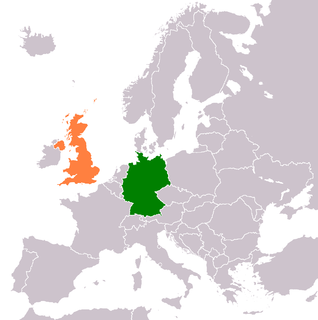
Germany–United Kingdom relations, or Anglo–German relations, are the bilateral relations between Germany and the United Kingdom.

Ancoats Hospital was the commonly used name for the large inner-city hospital, located in Ancoats, to the north of the city centre of Manchester, England. Its official name was Ancoats Hospital and Ardwick and Ancoats Dispensary from 1875, when it replaced the Ardwick and Ancoats Dispensary that had existed since 1828.

University Hospital Hairmyres is a district general hospital in East Kilbride, South Lanarkshire, Scotland. The hospital serves one of the largest elderly populations in Scotland. It is managed by NHS Lanarkshire.

Withington Community Hospital is a hospital in south Manchester, England, managed by the Manchester University NHS Foundation Trust.
This is the history of South Africa from 1910 to 1948.
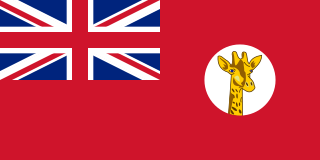
Tanganyika was a territory located on the continent of Africa, and administered by the United Kingdom from 1916 until 1961. The UK initially administered the territory as an occupying power with the Royal Navy and British Indian infantry seizing the territory from the Germans in 1916. From 20 July 1922, British administration was formalised by Tanganyika being created a British League of Nations mandate. From 1946, it was administered by the UK as a United Nations trust territory.
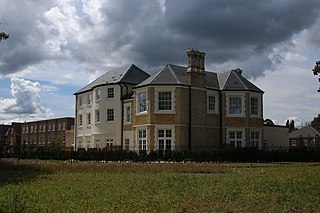
Latchmere House is a building and grounds south-east of Ham Common in Ham, in the London Borough of Richmond upon Thames, in south west London, England. Its south is in the Royal Borough of Kingston upon Thames.

St Augustine’s Hospital was a psychiatric hospital in Chartham, Kent, England. It was founded as the second, or East, Kent County Asylum in 1872. In 1948 the hospital became part of the National Health Service and was renamed St Augustine's Hospital. The hospital gained notoriety in the 1970s when it was the subject of a committee of inquiry into malpractice and mismanagement. St Augustine's Hospital closed in 1993 and the site is now occupied by housing, although a few of the original hospital buildings remain.

The 66th Division was an infantry division of the British Army, part of the Territorial Force, which saw service in the trenches of the Western Front, during the later years of the Great War and was disbanded after the war.
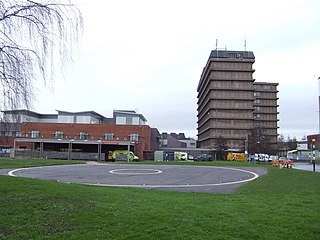
Gloucestershire Royal Hospital is an acute District General Hospital on the Great Western Road in Gloucester operated by the Gloucestershire Hospitals NHS Foundation Trust.

St James' Hospital was a healthcare facility in Balham, London that existed between 1910 and 1988. The hospital buildings occupied sites within the boundary of Ouseley Road, Sarsfield Road and St James's Drive Balham London SW12.

The Royal Navy was active in East African waters from the 1850s to the 1960s.

Hackney is a district in East London, England. The area forms around two thirds of the area of the modern London Borough of Hackney, to which it gives its name. It is 4 miles (6.4 km) northeast of Charing Cross, and includes part of the Queen Elizabeth Olympic Park. Historically it was within the county of Middlesex.

The British colony of Hong Kong saw no military action during World War I (1914–1918). The biggest external threat to the colony was perceived to be the German East Asia Squadron, but the squadron was eliminated in December 1914. Nonetheless, the city served as an important port in East Asia, including as the headquarters of the British China Station, and saw significant socioeconomical changes during the war.





















